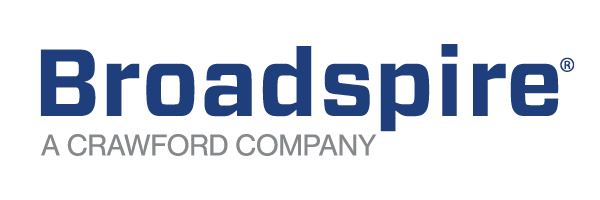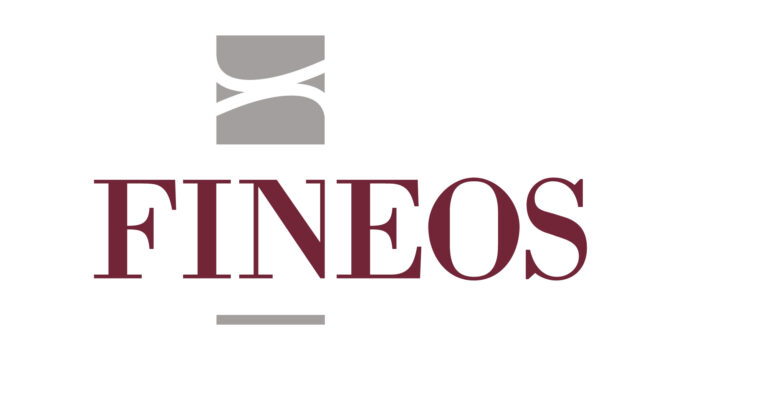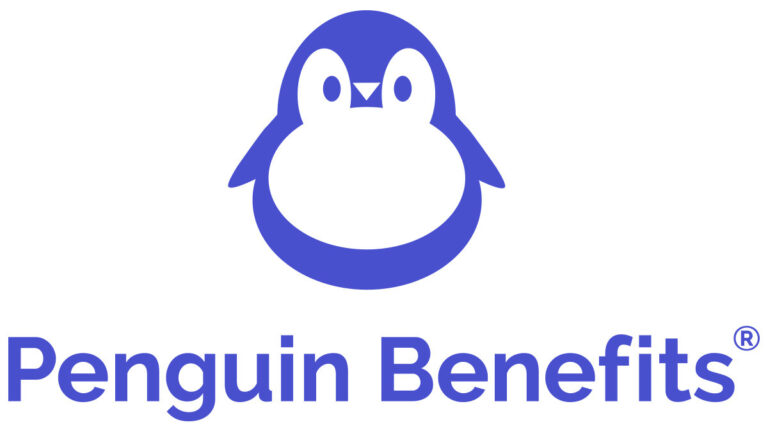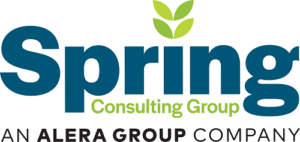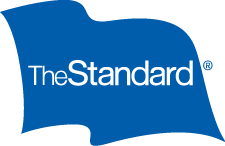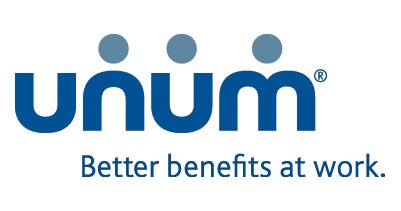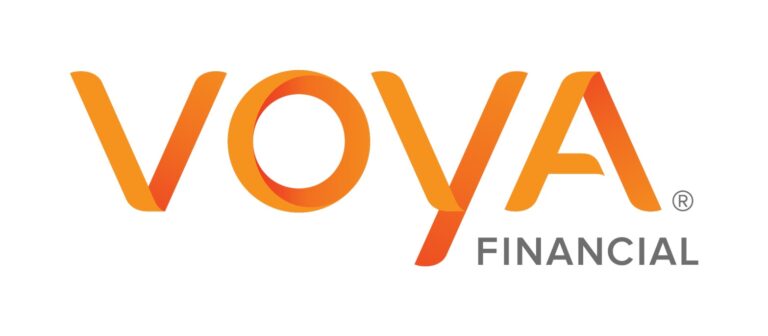How will an increasing number of paid family and medical leave (PFML), which vary by state, influence the future of employee benefits? Listen in to this episode with Terri L. Rhodes, CCMP, CLMS, CPDM, MBA, CEO, DMEC, and Breanna Scott, CLMS, senior product manager, paid statutory leave for New York Life Insurance Company, for details, practical tips, and insights on industry trends.
DMEC resources unlocked for podcast listeners:
- What Does Your Paid Leave Program Say About You As An Employer?
- Does Offering a Private PFML Plan Make Sense?
Transcript
DMEC: Welcome to Absence Management Perspectives. A DMEC Podcast. The Disability Management Employer Coalition, or DMEC, as we're known by most people, provides focused education, knowledge, and networking opportunities for absence and disability management professionals. DMEC has become a leading voice in the industry and represents more than 18,000 professionals from organizations of all sizes across the United States and Canada. This podcast series will focus on industry perspectives and provide the opportunity to delve more deeply into issues that affect DMEC members and the community as a whole. We're thrilled to have you with us and hope you'll visit us at www.dmec.org to get a full picture of what we have to offer, from webinars and publications to conferences, certifications, and much more. Let's get started and meet the people behind the processes.
he discussion complements the:Terri Rhodes: Thank you, Heather. Having Breanna on this call with us is really quite a treat. Breanna is part of our Executive Advisory Board with DMEC, and it seems for the last few years, our conversations have been taken over with all of the various paid family and medical leave laws that have cropped up across the United States. And Breanna is the one person that we look to at the Executive Advisory Board to inform us on what's happening. So you're in for a treat today.
Breanna Scott: Well, thank you so much, Terri.
Terri Rhodes: You're welcome. In my article that was published in the @Work magazine, I outlined some of the differences in what states allow employers to do with PFML. In other words, what is happening in one state is not happening in another. And there's all kinds of issues that come up with that, particularly if you're an employer that operates in multiple states. And what I would like to have you talk to us about, first of all, Breanna, is how are employers who are operating in multiple states keeping up with all of the changes and what is their biggest challenge?
Breanna Scott: Yeah, that's a fantastic question, and one that is frankly, not easily answerable. Probably there's probably a number of ways that most employers are having to try to keep up with all of the changes, and, frankly, simply trying to keep up with all of the changes. All the new legislation, both unpaid and paid state leave law, are probably the biggest challenges employers are facing right now, especially when they're multistate employers. So I think there's a variety of ways I hear from clients really trying to keep up with all of this, utilizing things like the state and local leave law reference materials that like DMEC provides through your website. That is one way that employers kind of keep up with what's happening. So that's giving you some legislative insight. Frankly, a lot of clients rely on information from carriers or from their broker partners, and they rely on us to keep them informed with what's happening. Many of us send out monthly newsletters or communications, provide websites; several different ways for employers to reference this information. And then kind of finally, I would say, depending on size of employer, they rely on either internal or external employment counsel for a lot of these updates. But as you can hear from my response here, this is really trying to keep up with multiple different resources. There's very likely not a one stop shop for all of this information. And that is probably one of the most challenging things for employers. The additional kind of major challenge, I would say, is really when a law changes or there's a programmatic change, what is the truly most critical thing to react to? That is a huge challenge for employers. So how does it exactly impact their policies? What exactly do they maybe need to change? That is likely the absolute biggest struggle when something happens at a state level.
Terri Rhodes: Yeah, I was just thinking as you were talking, Breanna, sort of it made a flash in my brain about Oregon and what's happening with that. Are we going? Aren't we going? Are we starting? Aren't we? So it's those kinds of things that I think can trip up an employer.
Breanna Scott: Absolutely.
Terri Rhodes: Yeah. And so we talk a lot about states where there's been a mandate for paid family and medical leave, but it's not all the states. And so what are employers doing in states where they don't have mandatory paid family and medical leave? Are they using an overarching employer policy? Are they providing benefits to those employees who aren't in a mandated state? Can you kind of walk us through what you're seeing?
Breanna Scott: Yeah, absolutely. And I have to give the regular caveat that every employer is a little bit different so it can depend a little bit on the employer culture what exactly they're doing the most regularly. I would say we see clients continuing to introduce an overarching paid parental leave benefit that's probably the most common. And or a paid caregiving benefit that would probably be the second most common. In addition to offering a short-term disability or long-term disability to try to kind of patchwork together the equivalent of a PFML program for all of their employees and then having their company paid, parental or caregiving leaves be offset by any mandated program for the period of time they offer it. This way, they can offer, say, an eight-week parental leave program for all employees. Those that are in mandated PFML states, their company paid leave offering is reduced by what they're getting under the statutory paid family medical leave until that eight weeks is over. And maybe they'll continue to get benefits depending on the state that they're in. For example, that is probably the most holistic approach that we're seeing to employers being able to offer a plan. I will say we still have employers come to us and say, hey, what state can I mirror that would satisfy the requirements of all of the state PFMLs that I could offer to all of my employees? Well, I would say now we're at such a patchwork of leave types and such a level of leave that it's pretty much impossible for an employer to really do that if they're truly operating in a lot of different states. If they're limited to one or two states, there might be a way to do that a little bit more easily to mirror the benefits of another state for all of your employees. But if you're truly operating in all 50 states, for example, it's next to impossible to actually develop a true paid family medical leave program that would satisfy all other state requirements and provide the same benefits to your non mandated employees at the same time.
Terri Rhodes: That is so true. I remember back in the day, I hate to say that I feel like it dates me where we had California, New York, New Jersey. What was the other one? Rhode Island paid family leave. And so you could do that as an employer. You could have a policy. And, you know, back then it was California. So you would look to California and say, okay, I can try to mirror my company policy so that I can provide benefits to everybody else in the company that would be eligible for such a benefit. Well, we can't do that. Now, to your point, you talked about a holistic perspective, and one of the things that we have seen and the private plan option has been in effect for a long time, but we're beginning to see that more and more of these mandate PFML plans are offering a private plan in order to administer these programs. And executives need to look at these benefits, really from that holistic perspective that you were talking about and determine, is a private plan the right option for them? And so, Breanna, can you share a few things that employers should consider when they're evaluating whether or not to implement a private plan?
Breanna Scott: Yeah, absolutely. And there, you know, are a number of considerations. So, first and foremost, I would say how many employees work in the various states with mandated programs. And how many of those mandated states does an employer have in play? That can be a good first step consideration for employers who might be interested in a private plan. If they have one or two employees in a state, it may or may not make as much sense for them to go. The private plan option always cost is the consideration. So someone should always balance out what their costs under a state program would be versus the cost of private plan administration. But cost is not the singular consideration here because employers also need to think about the experience. And when I say experience, it's not just their employees experience, it's their own experience, their own HR staff's experience, coordinating the various state programs, getting insight from the various programs, what's required of their HR staff to keep a private plan up and running. All of those can be considerations that a company should consider, their executive team should consider when they're making that decision. I would say often what we are seeing, we're seeing more and more interest in private plan administration, the more states that someone may have to operate in, because you can provide the most consistent experience for all of your employees across all of the different states if you're working with a singular carrier for your coordination with other benefits. As know.
Terri Rhodes: Breanna, you made a really good point, and I think it's one that we don't consider as much as we know. We always talk about the employee experience, but there is an additional administrative I don't want to say burden, but it might be depending on the state for maintaining a private plan and what an employer meaning? The HR department usually, but it might involve payroll. It might involve your finance department. What needs to be done to maintain that private plan so it's not just the employee experience. And I'm really glad that you brought that up because that is an important aspect of having a private plan.
Breanna Scott: Absolutely. It depends a little bit on the state how much effort is required from the employer to offer a private plan. And so that is an important consideration. Right. Offering a private plan in New York is a lot simpler for an employer than someone who wants to offer a private plan in California. That doesn't mean that offering a private plan in California is not a good choice for an employer. But an employer needs to be going into that with eyes wide open about what the obligations are to get to that private plan administration. Why do they want to do it? What benefit do they hope to get out of it and ensure that they have the capacity to continue to kind of support the compliance requirements so that can vary state to state a little bit. And carrier partners will always help employers with understanding what their various obligations are in the various states they're looking at. But that is an important consideration. Right. On the flip side, I would say the employers sometimes want to go to a private plan option because their experience working with the states, they don't feel like they get enough information from the state-run program. So it can also be an experience play for the HR staff just in terms of inside of statutory claim activity. What's really happening with a PFML claim that can be easier to see with a private carrier than it often can be with the state-run plans because state run plans often develop portal experiences more focused on the employee. For an employee to understand what's happening with their claim, that's not a bad thing. It's just saying often employers may be a little bit more left in the dust there in terms of what's happening with a state-run pay family medical leave claim.
Terri Rhodes: That is so true. And I think that segues into our next question a little bit when we talk about this holistic approach and how employers are handling this. How does the employee ultimately get paid in a private plan? And if you can't get the information from a PFML plan, if you can't get the information from the state, it's really hard to coordinate pay. And so many employers struggle because they can't get the information that they need from some of these portals. So in thinking about this, how are employers and if you have any examples, that would be great, how are employers integrating PFML into their overall benefit offerings or policies?
Breanna Scott: Yeah, and I think again, there can be many different aspects of ways that employers do this. But a couple of examples, one which we've talked about a little bit, I do think that we still see a lot of employers expanding their company paid leave offerings to integrate with these mandated programs, but also provide PFML benefits to those who are in states that are non-mandated programs as well. So we're seeing that as an ongoing little bit of a trend and that kind of fully coordinates the pay, at least for a period of time. Often those pay parental or paid caregiving benefits provide 100% of income for six, eight, 10, or twelve weeks. Right? So there's a period of time where the focus is really on that company paid leave and then you can just reduce that payment for the anticipated money that someone is getting under PFML. That's one example. I would say. The other examples that I am seeing are employers kind of making some holistic changes to how they manage. Let's say this is kind of a small example, but I am seeing employers change how they manage intermittent bonding, for example, and they're making wholesale changes to their approach of how they've managed that historically under the FMLA when states are coming on board. And I'm going to pick on Oregon as one example of this because I live in the state of Oregon, so I get to make fun of it a little bit. Oregon PFML will require that employers offer an intermittent bonding and that is not at the employer's choice, and they'll be required to offer that from day one. That's not necessarily the position that they have taken in the past. Now they're looking at their overall FMLA management saying, oh, we really shouldn't just do this for our Oregon employees. We should actually make a wide sweeping change to permit this for all of our employees. Some of that ensures that you're running programs as concurrently as possible. Some of that is then permitting people to run down their job protected leave banks a little bit faster maybe than they historically have been. So we're seeing employers make some holistic changes to their leave management programs based upon some of these state requirements and trying to ensure that they're being as consistent as possible across their employee populations in a couple of those key ways.
Terri Rhodes: Great, thank you. I really appreciate you walking us through some of those specific types of changes that employers are considering. So let's just switch gears here a little bit in terms of how these costs are being mean. PFML is not a free benefit. There's typically an employee portion contribution via a payroll tax and there's usually an employer. Are there any trends or do you have any data about how employers are handling these costs? Meaning are they paying all of the contributions or are they most of the time letting the employees pay their percentage and the employers pay theirs? What are you seeing?
Breanna Scott: Yeah, I would say there is not a ton of true industry data on this yet some of that because PFML really and truly is still evolving in terms of a benefit in our marketplace. But I do think overwhelmingly we see employers typically are having employees contribute to these statutory benefits at the level which is permitted under the state program. And so that varies a bit state to state. Some programs are frankly totally employee funded. Others have that split contribution. Very rare circumstance where a state doesn't permit that. But the District of Columbia is one example where the employer has to incur the full cost. So it can be a little dependent on the state. But typically where permitted, we are seeing employers have employees contribute to the level permitted under the state. Some employers, what I do think is a trend, some states require a pre-funding period for contributions, meaning their contribution go live date might be January 1 of one year. Their benefits might go live the next year. During that pre-funding period, it is much more likely that an employer will pay the full cost. And then when the program actually goes live, then employees will start to contribute to the cost of the benefit. Some of this behavior in this trend, I think, is due to the fact that sometimes employers are deciding whether they want to be in a state plan or go to a private plan, and depending on the state, what you have to do with those employee contributions can be different during that pre-funding period. So I think some employers are trying to get out of worrying about those employee contributions in that first kind of pre-funding year, and then they start taking the contributions from employees when the programs go live and they know for sure whether they're in a state program or a private plan.
Terri Rhodes: Great. I think that there's a lot of information that we've unpacked here today in terms of paid family and medical leave. But to kind of wrap up our conversation, I want to talk about if we could look into our crystal ball and what does the future of PFML look like? Is there going to be an evolution, and how is this going to change the absence and disability management? You know, as these states are more and more states are moving to fill in these gaps that are left because we don't have a federal paid leave plan. What are your thoughts on this, Breanna?
of:Terri Rhodes: Yeah, I'm so glad you brought that up, Breanna, because I did want to see if we could sneak that in here. These voluntary options that we didn't really talk about that in some of our other discussion. But I think it's important because we know that there's two states now that have a voluntary option, but we know that there's other states that typically would not have had a paid family and medical leave law that are looking at some of these voluntary options as well. And I do think that that is going to be a game changer, is to allow employees to purchase this insurance on their own through a policy or let their employers choose whether they want to provide this type of benefit. So thank you for bringing that up, and I don't know if there's more we want to say on that, but I appreciate that we did bring that up as an option that's also really new to the PFML landscape.
Breanna Scott: Yeah. What I think might be kind of interesting to call out is the difference between, I'm going to say New Hampshire and Vermont separate from some of these other states florida, Texas, Arkansas, Tennessee, even Virginia that have more recently amended their insurance code in New Hampshire and Vermont. Both states start with a mandate to their state employees that actually crafts what the program overall looks like. So there's kind of a this is what the program has to be kind of fundamentally has been defined at some level for both of those states. In these other states, there's kind of a very base level minimum product threshold that you need to meet to be considered a paid family leave type of insurance. But all of the nuances and structure of what that program has to look like and what exactly is offered is left to the individual carrier to develop and decide. And frankly, most of us use software providers that also have to build similar flexibility to the type of offering that we want to offer. So even when employers are interested in, say, hey, Florida has changed their law and I want an insured paid family medical leave offering right now that might not exist because we might not all have a product developed, our software solutions may not be able to administer a product like that quite yet. So right now there could even be this legislation for a market that's not even really there and is still evolving, if that makes sense. So it's a little bit different even when we're talking about voluntary program to voluntary program.
Terri Rhodes: Yeah. So we've tried to unpack a lot of information here today, and I hope that we've answered a lot of questions for individual employers who might be considering the different options available to them. Breanna, thank you so much for your expertise, and I really appreciate your time today.
Breanna Scott: Thank you so much for having me.



